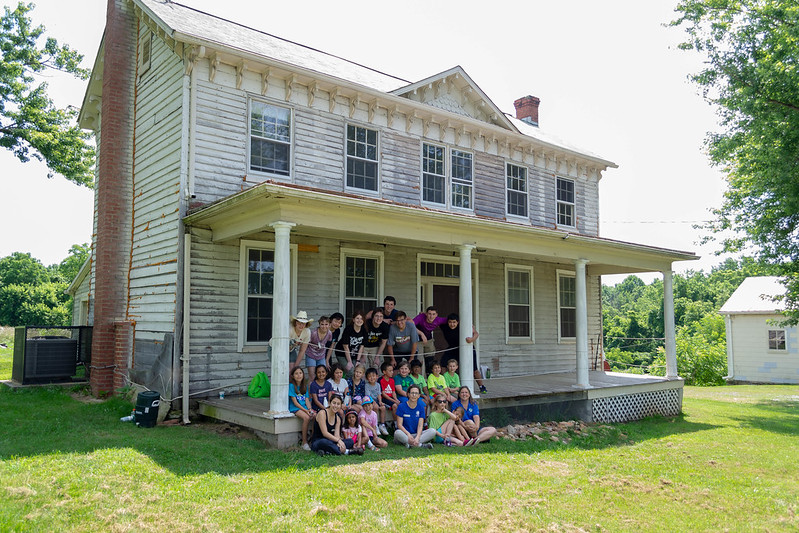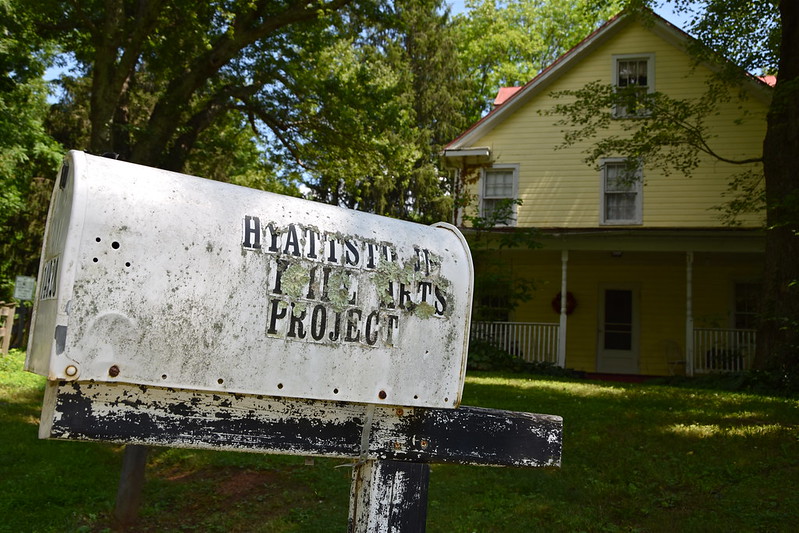Historic Sites at Little Bennett Regional PARK
Little Bennett Regional Park is home to 12 historic sites and points of interest. These areas highlight life in Montgomery County in the 18th, 19th, and 20th centuries. A well-planned trail hike can lead you to most sites, taking you on a walk through time.
The 3700 acres that is Little Bennett Regional Park used to be agricultural and mercantile land. The park landscape contains natural and built features and clues to former communities of people and occupations whose histories tell a story.
As early as the 18th century, the Little Bennett Valley was the scene of agriculture and small-scale industries capitalizing on the region’s abundant resources of timber, water, vegetation and vast acreage for farming. Like all of Montgomery County, Little Bennett land included plantations and industries that used forced chattel slave labor as the economic engine of their success. Several grist mills, a sumac mill, a sawmill, a saw and bone mill, and a whisky manufactory were established at various times along the Little Bennett Creek. Only the Hyattstown Mill remains as testimony to those early enterprises. The valley’s steep and rocky slopes were not particularly encouraging as a soil type for farming, but tobacco was cultivated in this area much later than other areas of the county, even into the 20th century, when most of the county had shifted to grains.
Around the close of the 19th century, a small rural community was established in the valley. It was named Kingsley after the King Family, who were prominent in the area, and was colloquially known as Froggy Hollow. The last remaining vestige of that settlement is a one-room schoolhouse now open to the public on a limited basis.
Enjoy the vast natural resources and scenic beauty as you explore the remnants of the past at Little Bennett Regional Park:
- The Montgomery Chapel Cemetery
The Montgomery Chapel Cemetery is the burial ground for the former parishioners of the Montgomery Chapel, a small black Methodist Episcopal church that closed in 1964 and was subsequently demolished. The 1871 one-room chapel formerly stood to the west of the cemetery and served as a house of worship, community center and a school. - The Zeigler Log House
Home to various generations of the Zeigler family (founders of a number of business ventures, particularly in the milling trade), the log house at the back of the extant house was built in 1823 by Elisha Hyatt, son of the founder of Hyattstown. The log house was dated by dendrochronology (tree ring analysis), and the front frame portion of the house was built by David Zeigler after 1854 when he married a Hyatt who had bought the property. The Zeiglers used both slave and paid labor in the 1850s to 1870s for their agricultural and milling operations. (Not open to the public.) - Hyattstown Mill
Saw and grist milling activities took places at this location under various owners from the 1790s to the 1930s. At times the mill functioned as a “custom” mill, grinding corn and feed for local farmers, and as a “merchant” mill, grinding wheat to serve a wider market. In 1996 the exterior of the mill was restored to its circa 1910 appearance and functions as an art space and gallery operated by the Hyattstown Mill Arts Project (www.Hyattstownmill.org), a Parks partner. The mill race is clearly visible along the Hyattstown Road. - Hyattstown Miller’s House
The miller’s house adjacent to Hyattstown Mill predates the mill. Throughout its history, until the 1930’s the house served as a residence for the mill owner or the miller, the individual in charge of the milling machinery. (Not open to public) - Zeigler’s Sumac Mill (site) The Zeigler Sumac Mill was located a short ways’ east on Prescott Road, and crushed the red berries of the weed which were then used in tanning leather. The water-powered sumac mill processed over 130 tons of the berries in 1850, and employed six men.
- Zeigler’s Saw and Bone Mill (site)
By the 1860s David Zeigler had transformed his water-powered milling operations to focus on timber and bone. The sawmill processed logs into boards, and the bone mill ground up discarded animal bones for use as fertilizer. The mill race is still intact and runs parallel with Hyattstown Mill Road. The only remnants are a stone wall and wheel pit. - The Charles Browning House
Built around 1850 by Charles Browning, this site is a good surviving example of a 19th-century Montgomery County farmstead with its collection of barns, a springhouse and other outbuildings. At the time of Browning’s death in 1887, the farm consisted of a main house, a bank barn, granary, wagon shed, carriage and poultry houses. (Not open to public) - Wilson’s Mill (site)
Yet another mill utilizing the natural resources of the Little Bennett Creek. Owned by Lee Wilson in the mid-19th century, only faint traces of the mill remain. - The Kingsley Schoolhouse
The recently restored schoolhouse was constructed in 1893 after the community pushed for a school within walking distance of Little Bennett Creek Valley farms. It served about 20 White students at a time, ages 6-12, until it closed in 1935 when the local population began to decline and it was replaced by a new schoolhouse in Clarksburg. (Open to the public for tours, events, and classes.) - Wims Meadow and Wims Negro Baseball Field
This ball field was a major destination for local African-American residents who came to have picnics and watch various teams–including the Hyattstown Bluebirds–play sandlot games on Sundays throughout the summer. Games were fielded by local stars who sought to play professional baseball in the National Negro League. This property belonged to Jim Wims, who bought it for farming in 1919, but took some of his land out of acreage to provide a place for his sons to practice ball. The popular baseball venue became known as Wims Meadow. This property was acquired by MNCPPC in the 1960s. - King’s Distillery
This is the former site of the King Distillery, producers of Maryland rye whiskey, popular in the late 19th century. Built in the late 19th century, it ceased to operate around 1907. This distillery was apparently Montgomery County’s only whiskey manufactory during that period. In addition, the King’s operated a small cider and saw mill near this location. - Norwood Tobacco Barn Ruins
Dating from 1884, the ruins of this barn were built by Jeremiah Norwood to cure his tobacco crop. Most tobacco barns in the south were large and airy to promote the natural drying of tobacco, but some Montgomery County farmers used a smoke method to dry their tobacco. Barns like this one were built of horizontal logs and tightly chinked, and then a fire was built on the ground of the structure to provide the smoke that would cure the tobacco leaves hanging above. This site also once contained a barn, corn crib, and a farmhouse belonging to Norwood, a carpenter, millwright, and Confederate army veteran and his family.

